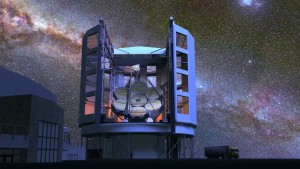Imagine looking into space using this super-giant telescope.
With a gigantic 39-meter aperture, the Giant Magellan Telescope is a super-giant earth-based telescope that promises to revolutionize our view and understanding of the universe.
It will be constructed at the Las Campanas Observatory in Chile and is expected to take 10 years to build.
The GMT has a unique design that offers several advantages. It is a segmented mirror telescope that will use seven of the world’s largest mirrors as primary mirror segments, each 8.417 m (27.61 ft) in diameter.
These segments will then be arranged with one mirror in the center and the other six arranged symmetrically around it.
The challenge is that the outer six mirror segments will be off-axis and although identical to each other, will not be individually radially symmetrical, necessitating a modification of the usual polishing and testing procedures.
The intention is to build seven identical off-axis mirrors so that a spare is available to substitute for a segment being recoated, a 1–2 week (per segment) process required every 1–2 years.
Although designed for seven mirrors, it can also begin operation with only four completed mirrors. Three mirrors have been cast and the mountain top is being prepared for construction.
The mirrors are being constructed by the University of Arizona’s Steward Observatory Mirror Lab.
Polishing of the first mirror was completed in November 2012. As this was an off-axis segment, a wide array of new optical tests and laboratory infrastructure had to be developed to polish the mirror.
The Telescope is extremely powerful with pinpoint accuracies when exploring nearby galaxies, stars and anything else which floats around in space.
The telescope is expected to have over five to ten times the light-gathering ability of existing instruments and will collect more light than any other telescope in history.
The GMT will have a resolving power 10 times greater than the Hubble Space Telescope
Scientists expect very high quality images of the Universe thanks to 25 metres aperture and most advanced adaptive optics to correct atmosphere distortion.
Image sharpness or quality should exceed the Hubble Space Telescope.
By 2024, the telescope will become operational with the remaining components being added from then on.
Elements of the main mirror and optics system which reduce blurring of the planet’s atmosphere will be brought in during phase 2.
For more information please visit:
http://www.inventionreaction.com

